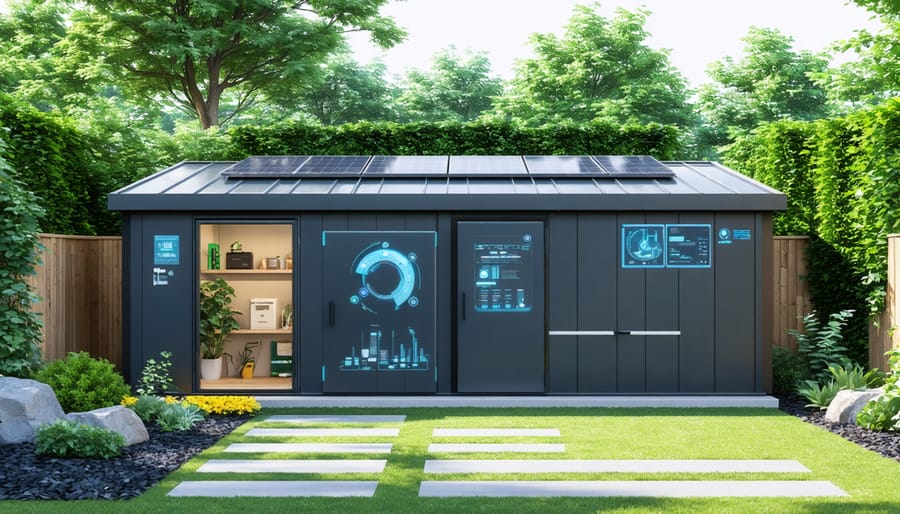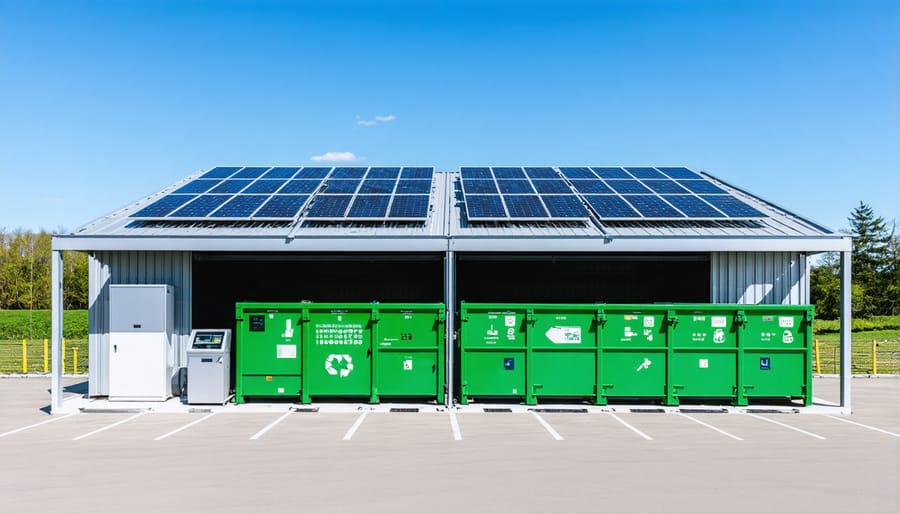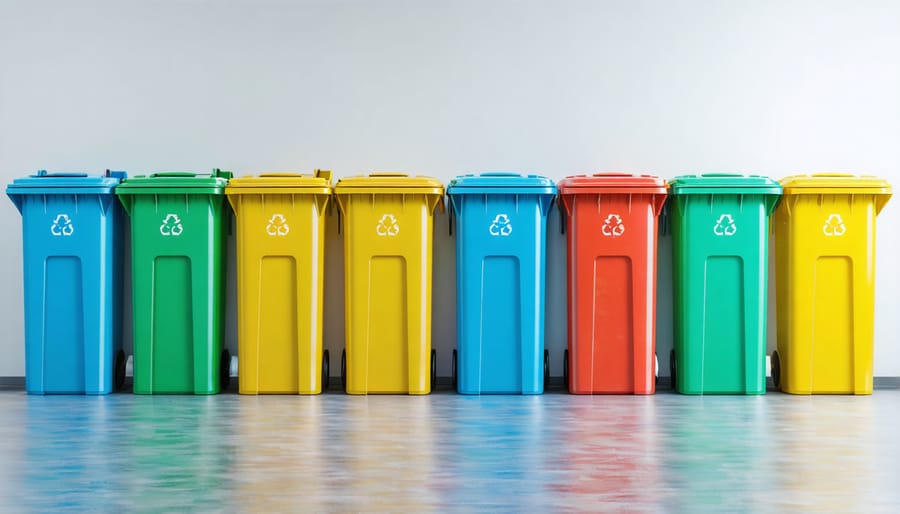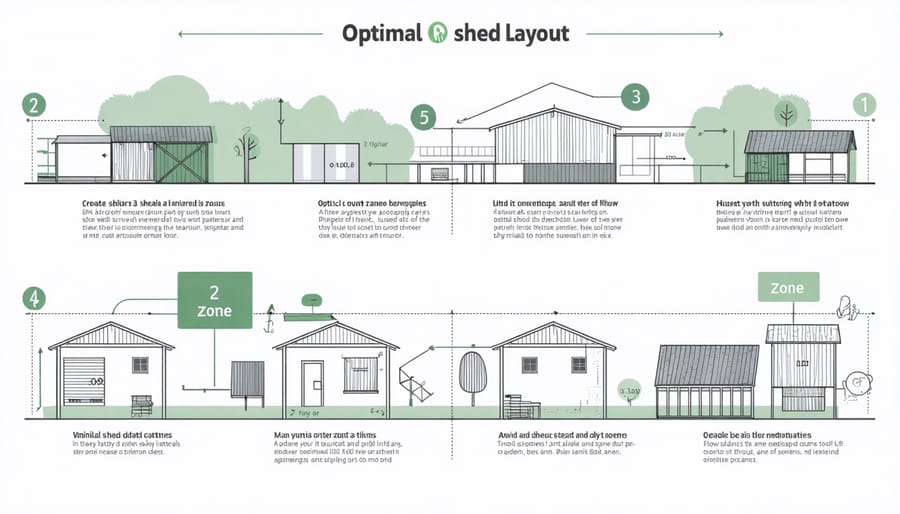Smart Waste Management Sheds: Transform Your Storage into an Eco-Friendly Powerhouse

Transform your backyard storage into a streamlined waste management hub with a purpose-built shed system that revolutionizes how you handle household recyclables and trash. Modern waste management sheds have evolved from simple storage units into sophisticated sorting stations, combining practical functionality with smart design features that keep odors contained and pests out. Whether you’re dealing with limited space in an urban setting or managing a larger property’s waste needs, a well-designed waste management shed creates an organized, hygienic solution that enhances your property’s value while simplifying your daily routine.
Today’s homeowners recognize that effective waste management starts with proper infrastructure, and a dedicated shed system represents the cornerstone of sustainable household waste practices. From built-in sorting bins and ventilation systems to weather-resistant materials and secure access points, these specialized structures offer a clean, efficient way to manage waste while maintaining your property’s aesthetic appeal.

Why You Need a Smart Waste Management Shed
Space Optimization and Organization
Smart storage solutions can transform your waste management shed from a cluttered mess into an organized, efficient space. Start by implementing a vertical storage system using wall-mounted bins or stackable containers to maximize floor space. Install adjustable shelving units along the walls to accommodate different-sized waste containers and recycling bins.
Consider using a zone-based organization system, designating specific areas for recyclables, garden waste, and general trash. Label everything clearly to ensure family members can easily maintain the system. Pull-out drawer systems and rotating bins can make accessing items in deep corners much easier.
For smaller sheds, utilize door-mounted organizers and overhead storage racks to make use of every available inch. Installing a pegboard wall can keep tools and cleaning supplies organized and easily accessible. Remember to leave enough clearance space for comfortable movement and waste container handling.
A well-organized shed not only improves efficiency but also makes the task of waste management less daunting and more manageable for everyone in the household.
Environmental Impact and Cost Savings
Investing in a well-designed waste management shed isn’t just about keeping your property tidy – it’s a smart financial and environmental choice. By implementing eco-friendly storage solutions, homeowners can reduce their waste disposal costs by up to 30% through proper sorting and recycling. Many municipalities offer incentives and reduced collection fees for households that maintain organized waste management systems.
The environmental benefits are equally impressive. A properly managed waste shed helps prevent contamination of recyclables, ensuring more materials actually get recycled instead of ending up in landfills. By keeping waste contained and organized, you’ll also reduce pest problems and minimize odors that can affect your outdoor living space. Additionally, many modern waste management sheds include features like rainwater collection systems and solar-powered lighting, further reducing your environmental footprint while cutting utility costs.
Remember, every pound of properly sorted recyclables not only helps the planet but also contributes to community recycling programs that can generate revenue for local initiatives.
Essential Components of a Smart Waste Management Shed
Sorting and Segregation Systems
An effective waste management shed starts with a well-organized sorting system. Begin with three basic containers: one for recyclables, another for general waste, and a third for organic waste or compost. Color-coding your bins makes it easy for family members to maintain proper sorting habits – try blue for recycling, black for general waste, and green for organic materials.
Consider installing pull-out bin systems that maximize space while keeping everything accessible. Wall-mounted sorting stations work wonderfully in smaller sheds, allowing you to utilize vertical space efficiently. For recyclables, subdivide your container into sections for glass, paper, and plastics to streamline your recycling routine.
Label each container clearly and consider adding simple pictograms to make identification quick and foolproof. Many homeowners find success with stackable bins that help organize smaller items like batteries, light bulbs, and electronic waste. To prevent odors and maintain cleanliness, line your organic waste containers with biodegradable bags and ensure all containers have secure, tight-fitting lids.
Remember to position your most frequently used bins near the entrance for easy access, while keeping seasonal or less-used containers toward the back of your shed.

Smart Monitoring Equipment
Modern smart monitoring systems have revolutionized how we manage waste in storage sheds. These innovative solutions include fill-level sensors that alert you when bins are reaching capacity, making collection scheduling more efficient. Motion-activated cameras help track usage patterns and ensure proper disposal practices, while automated sorting systems can help separate recyclables from general waste.
Many systems now come with user-friendly smartphone apps that provide real-time updates on waste levels, collection schedules, and maintenance needs. Temperature and humidity sensors help prevent odors and maintain optimal storage conditions, especially important for organic waste. Some advanced systems even include automated ventilation that activates when needed.
For homeowners looking to optimize their waste management, these smart features can significantly reduce collection costs and improve overall efficiency. The initial investment typically pays for itself through better waste handling and reduced maintenance needs.
Ventilation and Safety Features
Safety should always be your top priority when managing waste storage, and proper ventilation systems are essential for maintaining a healthy environment. Install mesh-covered vents near the roof and base to create natural airflow, preventing the buildup of harmful gases and reducing moisture accumulation. Consider adding a battery-operated carbon monoxide detector for extra safety, especially if storing organic waste.
Keep a fire extinguisher mounted near the entrance and ensure the shed has adequate lighting, preferably with motion sensors. Install sturdy locks to prevent unauthorized access and protect children from accidents. Consider adding grip-friendly handles and non-slip flooring to prevent falls when handling waste containers.
For chemical waste storage, include a spill containment system and clearly label all containers. Position your shed away from living spaces and ensure easy access for waste removal vehicles. Regular maintenance checks of these safety features will help protect your family and property while managing waste effectively.
Setting Up Your Smart Waste Management Shed
Planning and Layout
Effective planning is crucial for creating a functional waste management shed that serves your needs while maintaining an organized appearance. Start by measuring your available space and considering the types of waste you’ll need to store. Allow for at least 2-3 feet of clearance around all sides for easy access and ventilation.
Draw a simple layout that divides your shed into distinct zones: recycling, general waste, and composting if applicable. Include space for storing bins, bags, and cleaning supplies. Consider installing shelving units along the walls to maximize vertical storage and keep cleaning materials off the floor.
Proper ventilation is essential, so plan for vents or windows on opposite sides of the shed. Position your shed away from living areas but close enough to be convenient for daily use. If possible, create a slight slope in the flooring toward a drain to make cleaning easier.
For optimal functionality, include good lighting and consider installing motion-sensor lights for evening access. Remember to plan for seasonal changes in waste volume, particularly during holidays or garden cleanup times, by incorporating flexible storage solutions.

Installation Tips
When installing your waste management shed, start by selecting a level surface with good drainage. If needed, create a solid foundation using concrete pavers or gravel. Position the shed at least 2 feet away from any walls or fences to prevent moisture buildup and allow for easy access.
Begin assembly on a calm, dry day with all your tools laid out. Most sheds come with pre-drilled holes, but keep a power drill handy for any adjustments. Install the floor panels first, ensuring they’re perfectly level before moving on to the walls. Consider adding rubber matting to the floor for extra protection against leaks and spills.
For ventilation, install mesh screens over any built-in vents to keep pests out while allowing airflow. Add weatherstripping around doors to prevent rain from seeping in. If your shed includes sorting bins, secure them firmly to prevent tipping. Finally, consider installing motion-sensor lighting for nighttime access and safety.
Maintenance Schedule
Regular maintenance of your waste management shed ensures its longevity and keeps your storage area clean and efficient. Start with a monthly inspection of the structure, checking for any signs of wear, loose hardware, or damage. Clean the interior thoroughly every three months using a mild detergent and water solution, paying special attention to corners and bins where residue can accumulate.
Inspect door hinges and handles twice a year, lubricating moving parts as needed. During spring and fall, examine the roof and walls for water damage or pest intrusion. Clear any debris from the surrounding area and ensure proper drainage to prevent water pooling.
Check ventilation systems quarterly, cleaning or replacing filters if necessary. Sanitize waste bins monthly using an environmentally friendly disinfectant. For metal components, apply rust prevention treatment annually. Keep a maintenance log to track tasks and schedule upcoming care, ensuring nothing gets overlooked.
Remember to inspect sorting systems and bin labels regularly, replacing them when they become worn or unclear. This simple maintenance routine will keep your waste management shed functional and hygienic year-round.
Practical Tips for Daily Use
To make the most of your waste management shed, establish a consistent sorting routine right from the start. Place clearly labeled bins for different waste types – recyclables, general waste, and compostables – in easily accessible locations. Consider installing motion-sensor lights to improve visibility during evening hours and make waste disposal more convenient.
Keep a small supply of biodegradable bags near the entrance and replace them regularly to maintain cleanliness. Install hooks or a simple pegboard system on the walls to hang cleaning tools and protective gear. This keeps everything organized and within reach when you need it.
Maximize vertical space by using stackable containers and wall-mounted organizers. A basic shelving unit can store cleaning supplies and spare bags while keeping them off the ground. Consider adding a small work surface for breaking down boxes or sorting materials.
Regular maintenance is crucial. Schedule weekly cleaning sessions to prevent odors and pest problems. Use natural deterrents like cedar blocks or essential oils to keep unwanted critters away. During warmer months, ensure proper ventilation by keeping vents clear and possibly installing a small battery-operated fan.
Create a simple checklist for family members or housemates to follow, including basic rules like closing bins properly and reporting when containers are nearly full. This helps maintain organization and prevents overflow issues before they occur.
A well-planned waste management shed can transform how you handle household waste while adding value to your property. By implementing proper organization systems, choosing the right size, and maintaining your shed regularly, you’ll create an efficient solution that serves your family’s needs for years to come. Remember to consider local regulations, climate conditions, and your specific waste handling requirements when designing your setup. Whether you opt for a basic storage solution or a more sophisticated system with sorting stations and composting areas, the key is to create a practical space that makes waste management easier and more sustainable. Take the first step today toward a cleaner, more organized property with a dedicated waste management shed that works for you.

